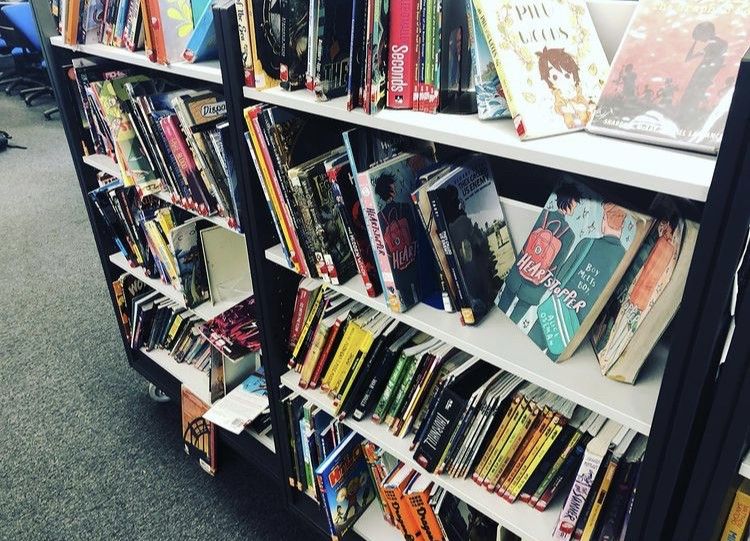Basmo will transform you into a better reader, help you achieve your reading goals and enhance your reading experience! It’s an Android & iOS app created to help you develop your reading habits, keep track of your reading progress, journal your emotions and schedule when to read.
It Lets Your Collection Stand Out
Weeding books lets the books that remain jump off the shelves. Like or not, people really do choose books based on their covers more regularly than we’d like to think. Having less on the shelves means you can create more face-out displays where students or patrons can easily interact with the cover. It’s an important part of library service in my opinion – having a vivid, colourful display of books with the covers facing the patrons. When I first started in the high school library I now manage, there was no weeding policy, the books were in no order, and they were crammed so tight I could hardly remove the books from the shelves if I wanted to. This is the result of hanging on to books longer than we should: it actively prevents people from trying to take books from the shelf. It also means those students or patrons aren’t going to bother reading the blurb or checking out the cover because it was a chore just to do it. Having plenty of space for books to breathe also allows for staff to write reviews or “shelf-talkers” and have them hang under the books on display. Our students love seeing what other students and staff have read and reviewed, and this is not possible in a un-weeded shelf.
What to Weed and When?
This one is trickier, because you need to tailor it to your specific library. In my library, if a fiction book doesn’t move in four years, I have to think really hard as to why I’m still hanging on to it. Is the cover awful? Has the book been hiding away on a bottom shelf and been largely unseen? If a book has been loved to death and is falling apart, it’s really easy to justify: weed it, and hopefully you can afford to buy another copy. I try hard to make sure the books that don’t circulate get some attention before they go. Sometimes, a book just lives its life and moves on. There’s no explaining borrowing tastes: no matter how many times you promote a book you love, some people just might not be into it. Nonfiction is another story. You need to ask: is it still relevant? Is it misleading or not inaccurate? Nonfiction is also trickier, because they cost a lot of money, and it can be really difficult for some to remove a book that is in perfect condition but is simply not moving. In my experience, I try to avoid nonfiction that I feel has a low shelf life relevance-wise – not an easy thing to do, though.
Take It Easy
Don’t weed everything at once: this will be stressful, time consuming and create a huge back-log of weeded books that need to be dealt with. I try to do it three or four times in a school year – more, if I can find the time. This gentler approach makes it much easier to handle and will ensure your shelves are continually looking healthy. As I have mentioned, circulation will almost always go up after you have undertaken a weeding program.
What Do You Do With All Of Those Books?
I can’t speak for any other libraries, but I do a lot of different things with our books. If I have weeded a book that I think students may still enjoy and it isn’t falling apart at the seams, I will put it in our “Free to Keep” box. This box is hugely popular with students who just want to run in the library and grab a book and not bother with us at the desk. I also give some to the Art Department, who have done some really fantastic things with books we’ve donated. I do things like blackout poetry with book pages that are falling apart, and when I can’t find an in-house use for them, I will still donate them to a charity shop, who always take them. There’s always something that you can do with those books. Weeding is an essential part of any well run library and should be done regularly. For some, the process is painful, but your patrons will thank you in the end.



